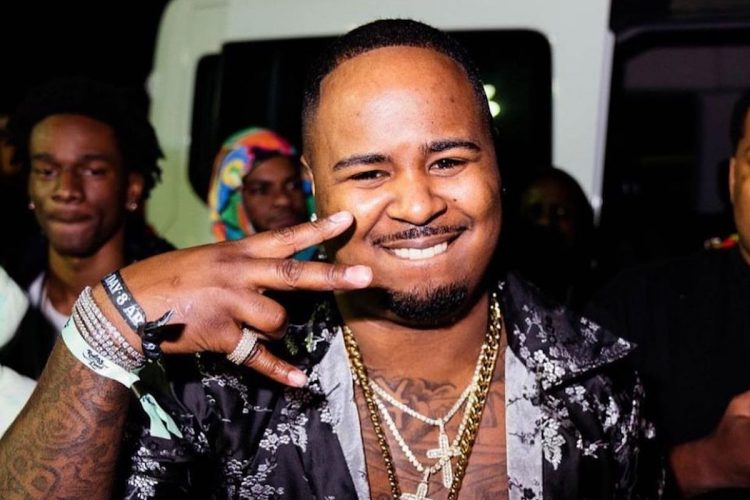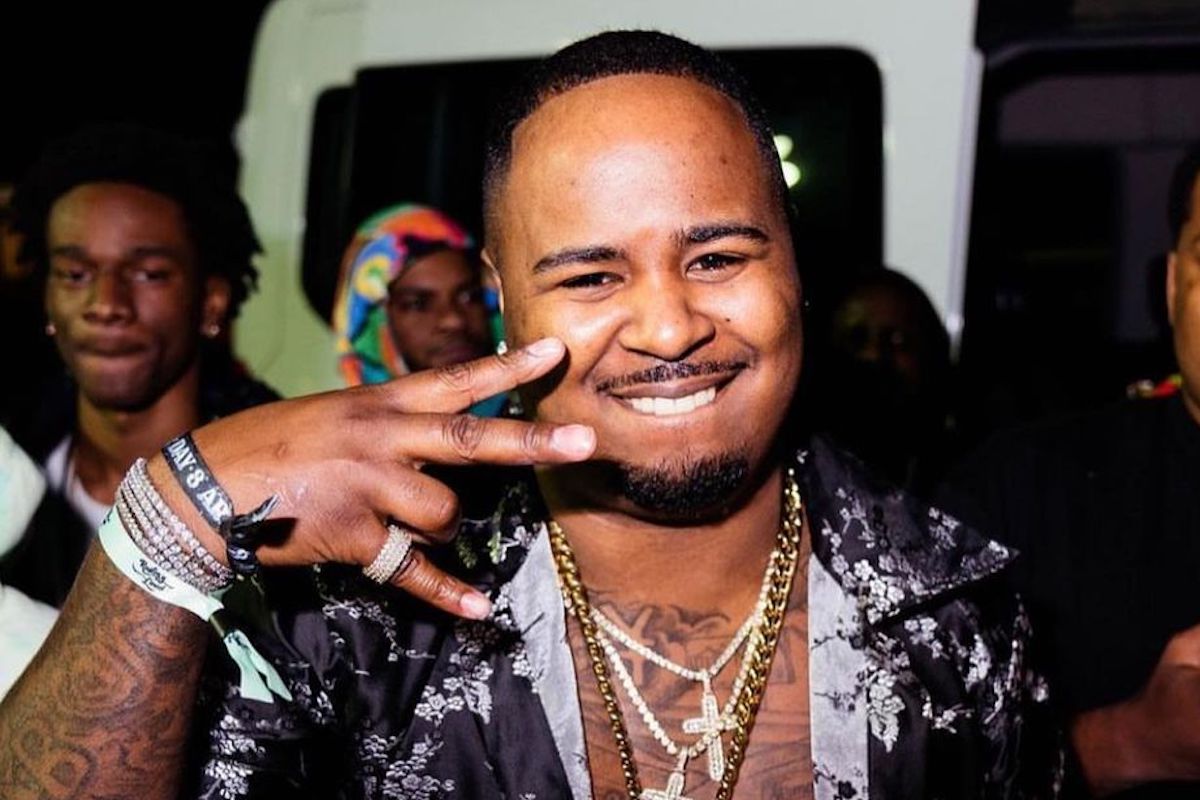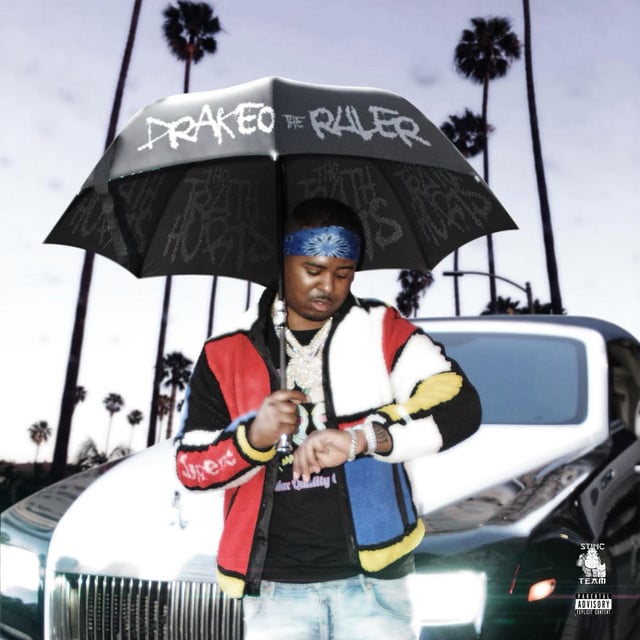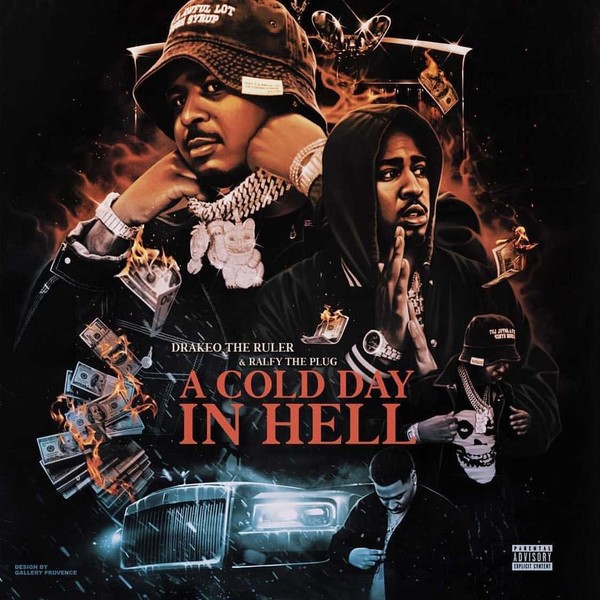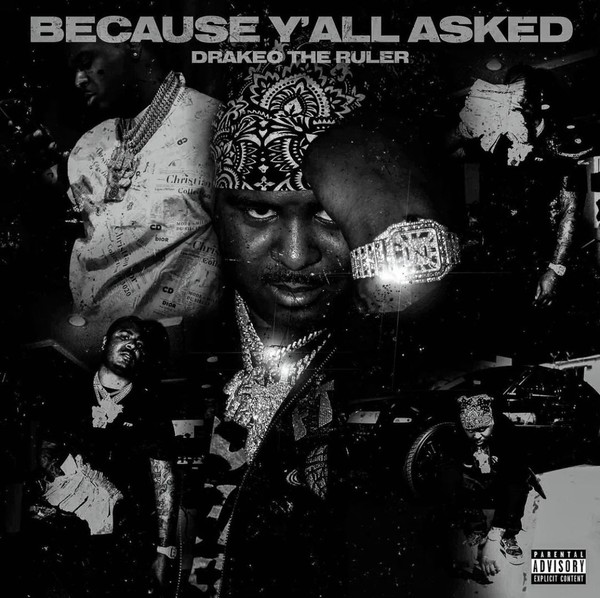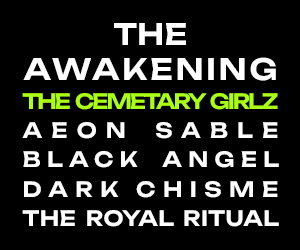Yo Drakeo, I want you to know that I know you were the illest MC to come out of LA in the last decade! Damn, it sucks that envy and jealousy are so real that it would drive someone to assassinate someone because of their greatness. Below is the deepest feature about Drakeo that will ever be written!
Written by Jeff Weiss via LA Mag
Exposition Park is located at the northern end of South Central, the point where the city starts to be carved up into block-by-block fiefdoms. Wander a few miles in any direction and you might encroach on turf claimed by Bloods, Crips, Treces, Varrio Nueva Estrada, 18th Street, Hoover Criminals, MS-13, or one of the deputy gangs in the Los Angeles County Sheriff’s Department, currently under investigation by the state of California.
On the cold Saturday evening of December 18, the 160-acre grounds are the site of a one-day music festival called Once Upon A Time in L.A., quite possibly the best (and likely the most expensive) concert bill ever booked within city limits. Tens of thousands gather in the shadows of the Memorial Coliseum, paying a minimum of $160 plus surcharges to see a lineup that blends the last 50 years of Southern California soundtracks: vintage lowrider soul (the Isley Brothers), ’90s G-Funk (Snoop Dogg), new millennium rap (YG), and that genre’s nascent next generation, much of which is creatively in debt to the West Coast’s most original stylist in a quarter-century, Drakeo the Ruler.
It had been a little over a year since the 28-year-old South Central rapper walked free from the Compton courthouse, swapping a black jail jumpsuit for designer clothes, dazzling jewelry, and blue-faced hundreds, having beaten first-degree murder charges that carried a possible life sentence. Drakeo and I first became close during this final, nearly three-year incarceration. At first, he kept calling in the hopes that I would tell the world about his wrongful persecution. But over hundreds of hours on the phone, the working relationship evolved into a deep friendship. Journalistic responsibilities became secondary to human ones. I’d never witnessed a miscarriage of justice so grave, so intimately.
Once Upon a Time in L.A. is slated to be Drakeo’s second official performance in L.A. since being released in November 2020. It’s the kind of dream he ritually imagined during those endless carceral midnights of the soul: a hometown show before adoring fans, a $50,000 payday, and the chance to prove that he is the best rapper in his city.
While waiting for Drakeo to go on, I watch Al Green sing about love and happiness. He clutches a red rose like a talisman, his teardrops-from-heaven falsetto fading in and out, weathered from stress and the slanders of time. It’s about 8:30 when Drakeo’s friend and producer Joog SZN tells me that it’s time to meet Drakeo and his younger brother, Ralfy the Plug, an innovative rapper in his own right.
There are two ways to get backstage. The first is an entrance within the festival itself, behind a flimsy chain-link fence manned by a lone security guard. The other is through a checkpoint just off Martin Luther King Jr. Blvd., where the organizers have created a production road and parking lot exclusively for the artists. Compared to the raucous festival grounds, the all-access grounds are sleepy. Most acts are 40-plus; one can assume they’re there for the check, not to socialize.
Calm has been a foreign concept in Los Angeles lately. It may not be the ’90s, when the city regularly eclipsed 1,500 murders a year, but homicide rates are up over 50 percent since 2019. In 2021, nearly 400 people were killed, a 15-year high. Another 1,400 survived shootings. It’s not just gangs: broader society is suffering from an excess of guns and the despairing sense that nothing matters. “L.A. is not safe,” goes the hook of a popular local rap song released last year. “L.A. is for the gangs.”
The hip-hop world is hardly immune. In February 2020, Brooklyn rapper Pop Smoke, only 20 but already King of New York, was murdered in a home invasion at the Hollywood Hills mansion he was renting from one of the Real Housewives. (Five alleged Hoover Criminals await trial; the youngest is 15.) A year before that, Nipsey Hussle was gunned down in the parking lot of his Marathon clothing store at Crenshaw and Slauson (a reported member of Nipsey’s own Rolling ’60s set has been charged). In the last several months, the rappers Nfant, Slim 400, and Earl Swavey, all artists of civic renown, were shot dead independently of one another. No arrests have been made in the killings, which many believe are gang related.
Over the last three decades, gangsta rap has become an integral part of L.A.’s sonic fabric. Drakeo grew up steeped in this tradition, yet self-consciously apart from it. Like Wu-Tang, E-40, and MF Doom, he’d conceived an entirely new rap language, at once flamboyantly absurd and sniper precise, what he called “lingo bingo.” To listen to Drake was to decipher a shadowland hieroglyphics of antique slang and diabolical taunts—to inhabit a tragicomic cartoon realism. He may have rapped about guns, drugs, and violence, but he did so with whimsy and literary flair. Drakeo renamed the extended clips on his rifles after Martin characters and called his rivals “Shirleys” (after Shirley Temple) or “Silly Billys.” Christening himself “the foreign whip crasher,” he alternated between Simpsons jokes and stories of Neiman Marcus shopping sprees, or from his lucrative day job as king of the flockers (local slang for breaking and entering).
Drakeo was obsessed with originality right down to the Stinc Team’s greeting—a linking of pinky fingers. Being the first to rock a line of designer clothes or purchase the newest model of imported luxury cars was a given. His idiolect was regular but not normal; his cadences and flows transformative. Drakeo oozed like mud across a codeine river, scraping counterclockwise against sinister percussion. He called it “nervous music,” describing it to me as a soundtrack for driving around South Central in a $100,000 sedan, trailed by shooters who might try to kill you at any given red light. His arrival made the previous models—the lingering hangover of G-Funk, the limber bounce of ratchet music, the khakis, Chucks, and white tees—feel obsolete. Decades earlier, Snoop Dogg liberated the West from the classical strictures and foundational rhythms of East Coast rap. Now Drakeo emerged to liberate the West Coast from the West itself. A new strain of California noir had arrived that would be imitated by street rappers from San Diego to Sacramento. In L.A, Drakeo swiftly became the people’s champ to teenagers and 20-somethings south of Pico.
I first met him in the crumbling Men’s Central Jail, just southeast of Chinatown. Shortly after publishing a rave review about his music, I’d received an invite to visit him as he awaited trial on firearms possession charges. It was late January 2017. A few weeks earlier, the sheriff’s department had raided his rented condo near LAX, hoping to find the murder weapons used in a December 2016 shooting in Carson. No dirty guns were found, but they turned up plenty of clean ones and arrested everyone on the premises, including Drakeo’s friends, brother, mother, and teenage sister.
When I spoke to him through the jail phone and six-inch-thick glass, he was still Inmate 487213, but what I most remember from that first conversation is how much he laughed. Over the years, our conversations ranged from outrage about what the judge deemed admissible at trial to his appreciation of FX’s The People Versus O.J. Simpson. For all the lyrical violence and larceny, the toughness inherent to his musical persona, there was a fundamental sweetness to him. He could be goofy and shy, rolling his eyes and raising his eyebrows like a silent film comic. For an artist so outspoken in his work, he could be oddly sheepish and reticent in person. That is, unless you caught him ranting about the things he hated: clones imitating his sartorial or rap style, the way the homicide detectives tormenting him looked like Chief Wiggum and Mr. Burns, or how the lobster pizza at Berri’s doesn’t contain real lobster.
He read the encyclopedia as a child, borrowing his alias not from Drake or the semi-automatic Draco pistol, but from the seventh-century Athenian lawgiver known for handing down a set of unusually harsh—“draconian”—dictates. Drakeo was especially amused by the legislator’s purported demise: he suffocated to death under the cloaks and hats showered on him by throngs of admirers.
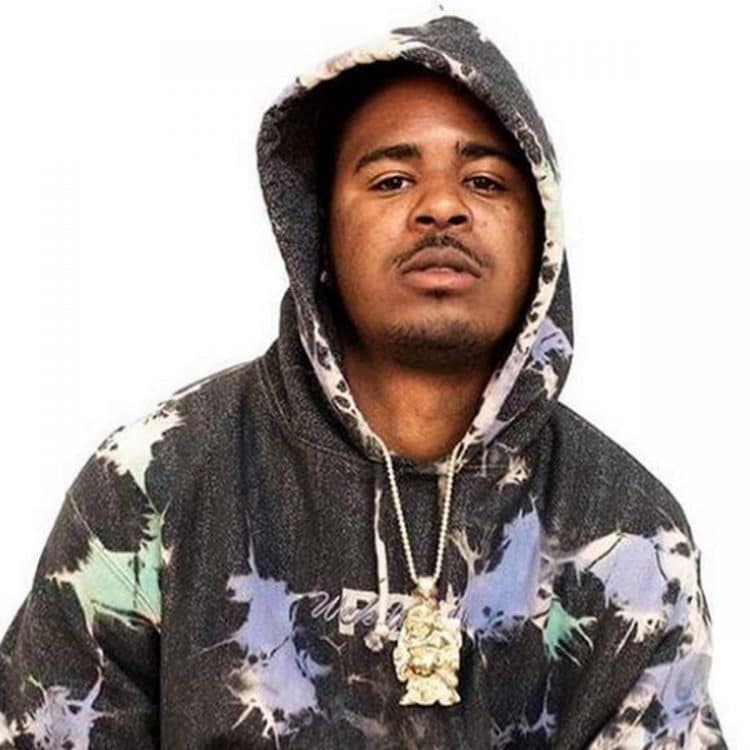
* * *
The fight appears to be over. Except for a couple of bruises, nobody seems to be badly hurt. That’s when the half dozen antagonists are replaced by what looks like an army of the dead. They appear as if out of nowhere, sprinting helter-skelter in battalions of 20, mostly in red, many ski-masked, letting loose shrieks of “Whoop” and “Suu Whoop.”
It seems clear that the initial confrontation had been a decoy to convince Drakeo and the Stinc Team that their rivals would be willing to catch a fair one. Instead, this mob of 100 swarms them, sprinting nearly to the spot where Snoop Dogg is about to take the stage. This is not merely an escalation or the chaos of a smaller fight gone out of hand. This is strategic, the obvious product of careful design.
By now, nearly seven or eight full minutes have passed since the first punch of the initial, decoy conflict. Maybe ten. Maybe more. Security and police are still entirely absent. Drakeo and the few friends with him drown in a sea of bodies, a red riptide. A video of the incident shows the Stinc Team attempting to retreat behind a fence the moment they realize the depravity of the ambush. In that video, the mob circles a blurred figure on the ground. Later, a private investigator who volunteers his services to Drakeo’s family tells them that after reviewing the footage, he counts 113 people taking on seven.
Directly in front of me, I watch one of the attackers leap up on a ledge, rip off his mask, beat his chest, and screech with apparent glee. As if on cue, the attackers all remove their red hoodies and scatter. Seconds later, security and the police finally arrive, much too late. So do a team of medics, who rush up to a prostrate body writhing on the asphalt. It is Drakeo: mask off, blood pouring all over his face and neck. It looks like his throat has been slit. In the distance, I hear the wail of sirens.
Cops form to separate the Stinc Team and me from the rest of the all-access area. From what I can see, there is no attempt to secure the backstage to prevent the assailants’ escape. No arrests are made. No one else has been stabbed, although one or two people are being treated in a medical tent for minor injuries. None of us is questioned about what we had witnessed.
But for the moment, we’re not thinking about the investigation—or non-investigation—to come.
The panic mounts. Where is the ambulance? Get him to the hospital. I watch medics give him CPR, then electro cardioversion shocks. Still no ambulance. Everyone is stunned, enraged, eyes like glowing embers. Finally, EMTs load Drakeo onto a stretcher and carry him into the red truck, lights flashing epileptically, siren on, into the night.
By now, my phone has started to blow up. Someone tweeted that Drakeo was stabbed in the neck. Twitter is aflame. A few people close to Drakeo call me. I remember nothing about what I tell them. Later, they say that I was in complete shock, mumbling over and over that he had been stabbed, and that it looks “bad . . . really bad.”
Helicopters scud overheard, ghostly search lights peering into the dark parking lot. About 15 feet behind me, a DJ remains on stage, running through the Southern California songbook to appease the oblivious crowd still wondering why Snoop hasn’t gone on. Sublime’s “Santeria” plays like a primitive curse.
No one knows which hospital they’ve taken Drakeo to. I find a group of friends at a fixed meeting point outside of the all-access area: some vintage lowriders that the production towed in to add atmosphere. My brain feels obliterated, a wobbly reel of bloodstained horror. I keep repeating what I saw, over and over, as if by divining some secret combination of syllables, maybe I can reverse it.
In the distance, I hear the end of Parliament-Funkadelic’s set. They play “Maggot Brain,” a spell of supernatural grief, the one where George Clinton told Eddie Hazel, “Play like your mother just died.” I close my eyes for a second and am struck by the asphyxiating sensation that Drakeo is gone. I know. I open them again and a kid in a “Free Drakeo” shirt walks past.
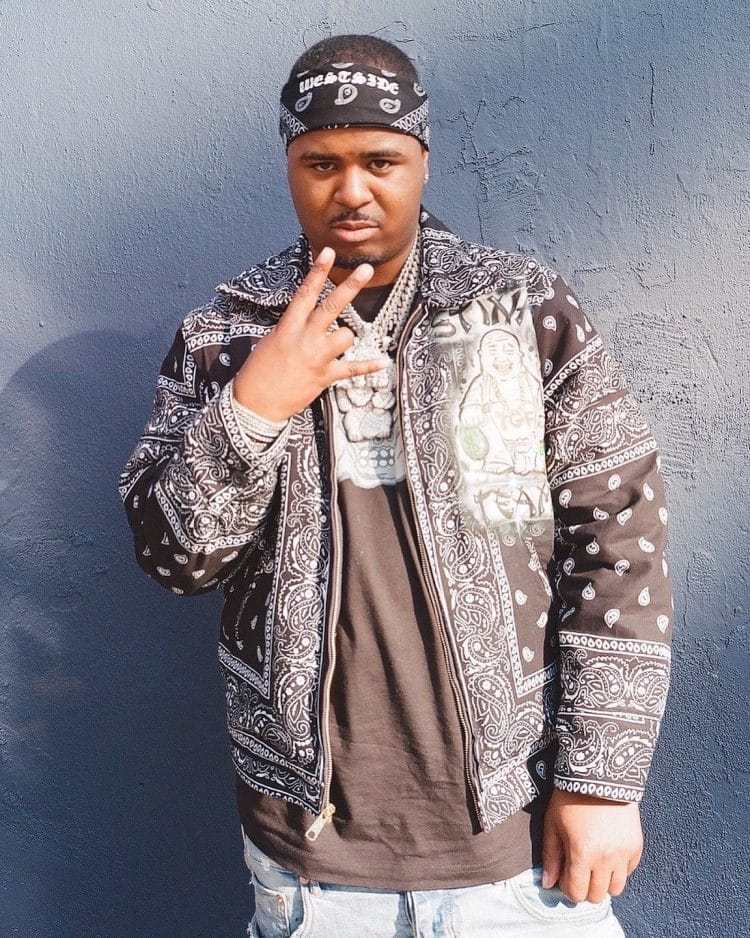
* * *
Drakeo was born Darrell Caldwell in December of 1993, one week after Snoop dropped Doggystyle and six days before Ice Cube’s Lethal Injection. He grew up a few blocks from where the N.W.A. star did, in the 100s section of South Central, an unincorporated labyrinth of low-slung stucco homes, liquor stores, churches, and mortuaries. Officially called Westmont, the neighborhood had the highest unemployment rate in the county (23.6 percent) in 2009. A half-decade later, it boasted its highest homicide rate, too. One grim corridor along South Vermont was nicknamed “Death Alley.”
He barely knew his father. His mother, a warm-hearted and devout woman named Darrylene Corniel, worked as a preschool teacher. He once told me that they were the poorest family on their block, but even at 4 years old, people remember that he’d tell anyone who would listen: “One day I’m gonna be rich.”
Nothing was simple. At 12, Drakeo was arrested for taking a dollar from a tip jar in Pasadena. He was shot for the first time at 15, when he was still a freshman at Washington High. This was around the time that jerkin, a dance-rap phenomenon, swept adolescent Los Angeles, ushering skinny jeans and fluorescent hair into vogue. After a party one night, sheriff’s deputies pulled over the mohawked teenager, a member of the Action Figure$ crew, without offering a reason for his detainment. As they interrogated him for an hour, cars kept driving past. As soon as the cops left, he became the victim of a random drive-by. The shooters were never caught. Drakeo started carrying a gun after that.
Stints at youth detention camps followed, often after arrests for burglary or gun possession. Police harassment was constant. On his last mixtape, he rapped, “All my life, I’ve been running from ‘Shootin’ Newton,” a reference to the notorious police station in South L.A. At 16, he received a juvenile felony strike for shoplifting a bottle of liquor from Ralph’s. At 19, he was riding in a friend’s car when sheriff’s deputies pulled them over and discovered Xanax on the floor. A public defender convinced him to plead guilty to felony sales to avoid serving time.
Rapping offered an escape. Friends told him he had a gift, which became clearer with each increasingly original freestyle that led up to his breakout single, 2015’s “Mr. Get Dough.” YG’s brother brought Drakeo to the attention of DJ Mustard, the city’s then-reigning Midas, whose “remix” and co-sign was all Drakeo needed to become a sensation. “Presented” by Mustard, Drakeo’s stellar 2016 mixtape, I Am Mr. Mosely, codified his style, and left many claiming that the 22-year old was Mustard’s younger, improved replacement for YG. A Blood from Compton, YG had recently become a superstar and dissolved ties with his long-time collaborator. But the Drakeo-Mustard union was short-lived too—the pair would fall out after Drakeo refused to sign to the producer’s label. This insistence on total creative and financial independence would define his life.
There was no local prototype for what Drakeo was attempting to do. If you’re rapping about street life in Los Angeles—at least to the extent that Drakeo was doing it—it has historically required gang membership. But Drakeo adamantly refused to join the Bloods or the Crips, once claiming on the No Jumper podcast, “gangbanging is for losers.” By the time I Am Mr. Mosely was out, his non-affiliation had already caused him some minor problems. But for the first few years of his career, he regularly collaborated with all sides. Even though he grew up around Crips, wore blue bandanas, and made no secret to where his sympathies lay, he refused to officially join a set. One of the chief rules of banging is that you can only choose one. Understanding that he needed to build his own system lest he be confined by another man’s, Drakeo would only formally rep his rap crew. It meant that the Stinc Team would be constantly tested.
As Drakeo’s stature grew, he became a moving target—in his own parlance, a “hood trophy.” Sometimes it seemed his genius was only matched only by his stubborn pride. He neither suffered fools nor tolerated slights, a stance that left him susceptible to petty beefs that should’ve been beneath him. His loyalty left no middle ground. He was your best friend or your worst enemy, constantly enraged by the fraudulence and inauthenticity that he saw around him.
During the summer and fall of 2016, numerous Blood sets declared war on Drakeo and the Stinc Team. Unless you were involved, it’s difficult to explain exactly why it got so out of control. As the Eight Tray Gangster Crip-turned-writer Sanyika “Monster Kody” Shakur once wrote, “there are no gang experts except participants.” I was told that the Stinc Team whooped some Inglewood Bloods on camera in a boxing match that went viral. Someone tried to snatch a chain from someone else. People started talking shit back and forth online. At some point, Drakeo started exchanging diss tracks with RJ, an Athens Park Blood and close collaborator with YG and Mustard, which brought another neighborhood into the mix. Drakeo’s slang, influence, and aesthetic were starting to shift the sound of the streets, and he had no problem letting his enemies know. As he said in one of his raps, “I’m a sore winner . . . When I leave, I take the scoreboard with me.”
The Stinc Team all had their cars shot up. There were robbery attempts. Drakeo’s mother’s house was sprayed with bullets. Many of his childhood friends were Neighborhood Crips, long-time rivals of Inglewood’s Blood gangs, and by virtue of association, Drakeo was sucked into a multi-generational war. The tension exploded in the December 2016 shooting of Davion “Red Bull” Gregory, a member of the Inglewood Family Bloods, at an adult pajama party in Carson. No one accused Drakeo of actually pulling the trigger, but given his celebrity and the ongoing drama, the presence of his brand-new Mercedes SUV at the crime scene made him the prime target for law enforcement.
The actual murder indictment wouldn’t be filed for another 16 months. By then, Drakeo had served an 11-month sentence for felony gun possession (stemming from the sheriff’s raid), and recorded his masterpiece, Cold Devil, now widely regarded as one of the best West Coast rap projects of the last decade. Record label offers and co-signs from famous artists rolled in until yet another gun charge stalled his momentum. In January 2018, having been free for only a month, Drakeo was arrested for gun possession at a smoke shop at 108th and Western. Later, when he’d been convicted of this charge, he would insist that law enforcement had been targeting him. During the booking, the cops in the 77th Division bumped his music and asked about his lyrics, especially the hook for a song called “Ugh.” (“The Chopper will make him go ugh.”)
During the next 60 days, the cops indicted almost every member of the Stinc Team on charges ranging from stealing guns to credit card fraud to felony graffiti (for spray painting a wall in a music video). All faced massive sentencing enhancements due to the prosecutor’s insistence that the rap crew amounted to a gang under California law. In March, the DA’s office charged Drakeo for committing first-degree murder, attempted murder, shooting from a motor vehicle, gang conspiracy, and illegal possession of firearms by a felon. The death penalty was on the table.
This is when I started to receive frequent calls from County. At first, Drakeo didn’t even seem to fully understand what he was being charged with. His original attorney was 90 years old and befuddled by the preponderance of social media and rap lyrics in the indictment. I helped Drakeo find a new attorney, John Hamasaki, who built an artful defense in the final month before trial, and potentially saved Drakeo from serving 25-to-life.
The prosecution’s case was spearheaded by a sheriff’s department homicide detective named Francis Hardiman, who had somehow concluded that Drakeo was the John Gotti of South Central, or at least that the right jury would believe he was. According to Hardiman’s theory, which was eventually presented by lead prosecutor Shannon Cooley (daughter of former DA Steve Cooley), the Red Bull murder was Drakeo’s fault. They alleged that Drakeo had gone to the pajama party with the intent to murder RJ. When RJ failed to appear, they contended, two members of Drakeo’s entourage killed Red Bull. In the state’s rendering, Drakeo had created a dangerous environment and supplied the guns, and was therefore culpable for anything that occurred.
The story seemed fanciful. There was no evidence that RJ ever planned on attending the party (his name wasn’t on the flyer). In interviews, RJ dismissed the prosecution’s theories, and insisted the party never even crossed his radar. None of this prevented authorities from meting out punishment long before a verdict. Drakeo spent months in solitary and weeks without sunlight. Books were confiscated and phone privileges frequently revoked. His mother lost her job with LAUSD after police sent her employer paperwork claiming that she was part of a gang investigation. At another point, Drakeo told me that the prison guards purposely placed him in a module filled with Bloods, so he would get “packed out”—out-numbered and stomped.
The case came to embody the prosecutorial overreach that had become endemic in Jackie Lacey’s office. Cooley, now a judge, frequently weaponized Drakeo’s lyrics against him, a particularly egregious example of a trend that has become a nationwide epidemic. In open court, Cooley claimed that obtuse lyrical insults were evidence of a murder plot. From slang to hand signs, hip-hop and Black culture were demonized and used as prima facie evidence of gang membership. Several Black jurors were dismissed after openly expressing their incredulity at the prosecution’s case (one kept on calling Hardiman “Detective Fuhrman,” a reference to the racist O. J. Simpson investigator).
In July 2019, the jury found Drakeo not guilty on all murder and attempted murder charges, failing to reach a verdict on two counts: shooting from a murder vehicle (the vote was 10-2 for acquittal) and a rarely used gang conspiracy law (7-5 to acquit). One of the shooters was convicted. While most court observers assumed the case would end there, Lacey promptly brought in a new prosecutor—reputed to be one of the most aggressive in the office—and redoubled the prosecutorial effort to send Drakeo upstate.
While retrial dates were repeatedly agreed to and then postponed, Drakeo became something of a cause célèbre. The New Yorker described the “prosecution’s case as so nonsensical that the story could be read as satire.” Drakeo enlisted artists like Earl Sweatshirt and Danny Brown to rap on remixes of his songs, giving them a second life and exposing his struggle and style to different fanbases. He also dictated impassioned (and often hilarious) Twitter rants to Joog SZN from jail, eviscerating the flimsiness of the DA’s claims and the corruption of the local criminal justice system. It was so effective that the prosecution successfully petitioned the court to slap Drakeo with a gag order—an unconstitutional interdiction on his free speech so stifling that he couldn’t even tweet “Free Drakeo.” Read the rest of the feature HERE!
